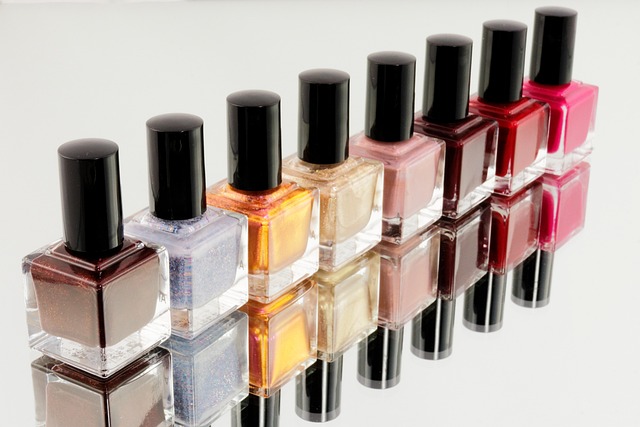Toxic chemicals in personal care products are nothing new. In fact, more and more people are now getting familiar with the fact that they are willingly putting toxic elements on their faces, bodies, and hair. You might even be using it on your pets and kids, thinking that you’re caring!
Toxic chemicals in personal care products appear in the same products that come with bold packaging that says one of the following:
- Organic
- Includes natural ingredients
- All-natural
- Free of toxins
But are they actually free of toxic ingredients? No.
This time around, I want to go through some of the the toxic ingredients in your personal care products. And no, you don’t need a science degree to understand the labels on these products as long as you read this article.
What are Greenwashed Products?
Organic ingredients are comparatively expensive to source and usually show results after prolonged usage– both of which make the product harder to appeal to the average consumer. To work their way around this, numerous unethical companies greenwash their brand.
And what is greenwashing?
Greenwashing refers to the misleading practices used by companies to build a false impression that they are environmentally sustainable. It involves the use of marketing or PR tactics to portray a company, its products, or its practices as environmentally friendly, even when they aren’t.

6 Toxic Chemicals in Personal Care Products
Here are the 6 top toxic chemicals in personal care products to always keep an eye out for.
Phthalates
Are you using any scented personal care products? If yes, you’re most likely interacting with phthalates, one of the known toxic chemicals in personal care products.
They are a group of chemical compounds used as plasticizers to increase the flexibility and durability of plastics. In personal care products, phthalates are commonly used as fragrance enhancers or as solvents for other ingredients.
Phthalates are known to be endocrine disruptors, meaning they can interfere with the normal functioning of hormones in the body.
Research has linked phthalate exposure to reproductive and developmental abnormalities, reduced fertility, hormone imbalances, and potential carcinogenic properties. These chemicals have been associated with adverse effects on the reproductive system, such as testicular toxicity and impaired sperm quality.
Exposure to phthalates can occur through inhalation, ingestion, or absorption through the skin. When using shampoos and conditioners containing phthalates, there is a risk of exposure through direct contact with the scalp and skin.
Common Products That Include Phthalates:
- Fragrances/perfumes
- Body lotions and creams
- Haircare products (check out the toxic chemicals in your shampoo and conditioner)
- Nail polishes
- Deodorants and antiperspirants
Cosmetics (foundations, blushes, eyeshadows, lipsticks) - Shower gels and soaps
- Personal lubricants and intimate products
- Plastic-based beauty tools and accessories (such as makeup brushes)
Parabens
Parabens are synthetic preservatives commonly used in shampoos and conditioners to prevent bacterial and fungal growth, prolonging the shelf life of these products. But with extended shelf life comes the scary toxicity of parabens for users.
According to FDA, parabens are bad news especially for women because they can mimic estrogen. Estrogen is one of the most critical hormones in the human body and is responsible for:
- Regulating the development and maintenance of female reproductive organs, including the uterus, fallopian tubes, and vagina.
- Contributing to bone health by aiding in the maintenance of bone density and preventing bone loss.
- Increasing high-density lipoprotein (HDL) cholesterol levels and decreasing low-density lipoprotein (LDL) cholesterol levels.
- Contributing to the maintenance of healthy skin, hair, and nails.
- Affecting mood and emotional well-being.
Supporting cognitive function and may play a role in memory and learning processes. - Helps regulate body temperature.
- Playing a role in maintaining cardiovascular health by promoting healthy blood vessel function and reducing the risk of heart disease.
Now parabens have been found to disrupt the endocrine system, which can lead to hormonal imbalances and potentially contribute to the development of certain cancers, reproductive disorders, and other adverse health effects.
Parabens can easily penetrate the skin and have been detected in breast tumors, raising concerns about their potential role in breast cancer. While the evidence is still evolving, several studies have highlighted a correlation between paraben exposure and an increased risk of breast cancer.
Moreover, parabens have been linked to skin irritation, allergies, and sensitization, causing scalp and skin problems for individuals with sensitive skin. Any of these are good reasons to include them on our list of toxic chemicals in personal care products.
Common Products That Include Parabens:
- Moisturizers and lotions
- Facial cleansers and toners
- Shampoos and conditioners
- Hair styling products (gels, mousses, sprays)
- Makeup products (foundations, primers, mascaras)
- Body washes and shower gels
- Deodorants and antiperspirants
- Shaving creams and gels
- Sunscreens
- Toothpaste
Formaldehyde
Formaldehyde-producing compounds have been used in many consumer products mainly due to their strong antimicrobial properties. They are added as preservatives to increase the shelf life of the product and maintain its integrity
Shampoos, conditioners, and body lotions are some of the products known to contain formaldehyde, so easily make our list of toxic chemicals in personal care products.
It is important to know that formaldehyde is regarded as a possible human carcinogen. This indicates that exposure to high quantities of formaldehyde has been linked to an increased risk of developing cancers, in particular, leukemia and nasopharynx cancer.
Common Products That Include Formaldehyde:
- Nail polishes and nail treatments
- Hair straightening and smoothing treatments (including keratin treatments)
- Hair dyes and hair color products
- Shampoos, conditioners, styling products
- Body washes and soaps
- Foundations, mascaras, eyeshadows
- Baby wipes
- Moisturizers, serums, and toners
- Men’s shaving products
Oxybenzone
Did you know that Oxybenzone, a chemical compound found in many sunscreens and other skincare products, is used to shield the skin from harmful UV rays? While it may seem like a helpful ingredient, there are some alarming facts you should know, and why it makes our list of toxic chemicals in personal care products.
Exposure to Oxybenzone has been associated with various adverse effects. People have reported experiencing skin irritation, and allergies, and there have even been cases linking it to the development of skin cancer.
Shockingly, the European Commission released a preliminary opinion in 2021 stating that the current legally acceptable percentage of Oxybenzone in personal care products is unsafe for humans, as it exceeds recommended levels by nearly threefold!
Moreover, recent research has revealed that Oxybenzone possesses weak estrogenic activity, meaning it can disrupt the endocrine system. This interference with hormone regulation could potentially impact both men’s and women’s reproductive systems and overall hormonal balance.
Common Products That Include Oxybenzone:
- Sunscreens (particularly those with SPF protection)
- Lip balms with SPF
Moisturizers and lotions with sun protection - Facial creams and serums with sun protection
- Body and face oils with sun protection
Makeup products with sun protection (foundations, BB creams, tinted moisturizers) - Haircare products with UV protection (leave-in conditioners, sprays, and styling products)
- Nail polishes with UV protection
Triclosan
A synthetic antibacterial and antifungal ingredient, Triclosan is one of the most toxic chemicals in personal care products. In fact, you’re probably ingesting it directly every day.
Triclosan has been found to disrupt hormone regulation, including the signaling of thyroid hormones. This disruption can have serious implications for normal development, reproduction, and metabolism.
Additionally, Triclosan has been linked to various skin allergies, including dermatitis, making it a cause for concern and get it on our list of toxic chemicals in personal care products.
Furthermore, studies have indicated that prolonged exposure to Triclosan may promote the growth of antibiotic-resistant bacteria. This can greatly reduce the effectiveness of antibiotics in treating bacterial infections, posing a significant threat to public health.
Common Products That Include Triclosan:
- Antibacterial soaps
- Hand sanitizers
- Toothpaste
- Mouthwashes
- Facial cleansers
- Acne treatment products
- Deodorants
- Shaving creams and gels
- Feminine hygiene products
- Foot care products
Styrene
Last, but not least on our list toxic chemicals in personal care products is Styrene. Artificial fragrances are found in almost all skincare and haircare products. Some fragrances might be mild compared to others, but the level of toxicity is relatively the same.
The scents are made using a collection of toxic chemicals which are hidden under the term fragrances in the ingredients. That’s where you’ll find Styrene!
Research has revealed that styrene has the potential to be carcinogenic, meaning it can contribute to the development of cancer. Prolonged exposure to styrene has been linked to an increased risk of certain cancers, such as lung and nasal cancer.
Furthermore, styrene can also have detrimental effects on the respiratory system. When fragrances containing styrene are dispersed into the air, they can be inhaled, leading to respiratory problems such as irritation, coughing, and difficulty breathing.
This is a concern not only for the individuals using these products but also for those in close proximity, as the fragrance particles can linger in the air.
Common Products That Include Styrene:
- Perfumes and colognes
- Body lotions and creams
- Shampoos and conditioners
- Soaps and body washes
- Deodorants and antiperspirants
- Cosmetics (powders, blushes, eyeshadows)
How to Find Toxic Chemicals in Personal Care Products
Everything is just a tap away. And when the ingredient section of your personal care products gets a little too confusing, it’s time to get yourself some digital help.
Thankfully, people are growing more and more aware of toxic chemicals in personal care products. And a few of them have developed toxic ingredients apps that help you find out if your product is toxic or not!
At Simple Holistic Wellbeing, we get that living holistic doesn’t come very easily and there’s a new set of hurdles to jump over every day. So I researched the best toxic ingredients app that can help you find out if you’re using a toxic product.

Our Choice: EWG’s Healthy Living App
The Environmental Working Group (EWG) is a highly respected organization known for its expertise in researching toxic chemicals. And their toxic ingredients app is one of the most reliable sources to head to when you need some ingredient advice.
Once you install it on your phone, all you need to do is scan the barcode on your product, and you’ll instantly see the health and safety rating provided by EWG scientists! You can also simply type in a product’s name to access the health ratings as long as you have an internet connection that connects to EWG’s database of ingredients.
Other Alternatives
Clearya
Clearya is an innovative toxic ingredients app and browser extension designed to help you shop with safety in mind. It offers similar functionality to other apps in its category but with a unique approach. This free tool serves as your vigilant companion, providing notifications while you shop.
Whether you’re browsing through popular online stores like Amazon or exploring physical stores, Clearya has you covered. It actively scans products and sends alerts if any toxic ingredients are detected. Plus, you have the convenience of scanning product barcodes in real-time, allowing you to check the toxicity levels of items you’re considering or those you already own.
What sets Clearya apart is its comprehensive notifications. In addition to highlighting the specific names of toxic chemicals found in products, it goes the extra mile by providing detailed information about the potential risks associated with using those chemicals.
Think Dirty
Introducing Think Dirty, an exceptional toxic ingredients app that stands out from the rest with its premium features.
This powerful tool not only provides you with a straightforward analysis of toxic chemicals found in products but also empowers you to customize your shopping experience by selecting the specific ingredients you want to avoid.
With Think Dirty, you have the freedom to personalize your preferences and set your own criteria for a clean and safe shopping experience. The app then diligently alerts you whenever any of the chosen ingredients are detected in the products you review.
It’s worth noting that Think Dirty has earned an impressive rating of 4.8/5 on the app store, a testament to its exceptional quality and user satisfaction!
Final Thoughts
Despite all the efforts one might you, there will always be a sneaky little chemical that finds its way inside your safe space in one of your own products. Maybe it’s the natural dog toothpaste you bought for your furry friend or simply the SPF you wear on your way out every day.
You might even want to make your own lip balm after finding out the commercial one’s a tox-stick!
But in this article, I wanted to highlight just what you need to look out for when you’re making these purchases. And better yet, just how to catch these toxic chemicals in personal care products with an even better toxic ingredients app!





